ZOTAC Gaming GeForce RTX 2070 Blower Compute Benchmarks
We are going to run the ZOTAC Gaming GeForce RTX 2070 Blower through some benchmarks to see if it is a worthy compute successor to the GeForce GTX 1080. We have a number of readers wondering how this will compare to the Pascal generation and the AMD offerings as compute-focused cards.
Geekbench 4
Geekbench 4 measures the compute performance of your GPU using image processing to computer vision to number crunching.
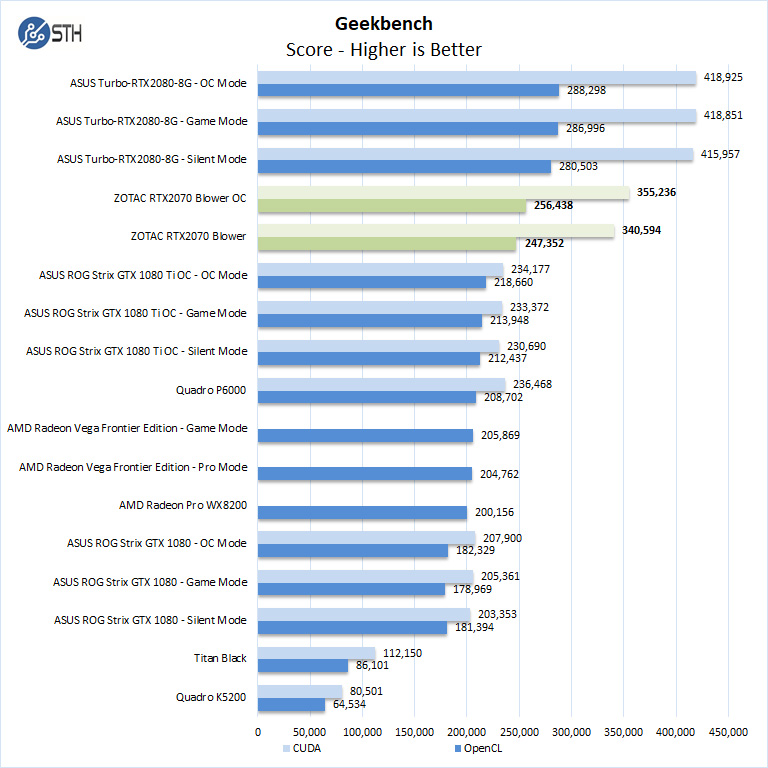
The ZOTAC Gaming GeForce RTX 2070 Blower reaches the top of our chart easily showing the CUDA/ OpenCL compute power of the NVIDIA Turing graphics cards.
LuxMark
LuxMark is an OpenCL benchmark tool based on LuxRender.
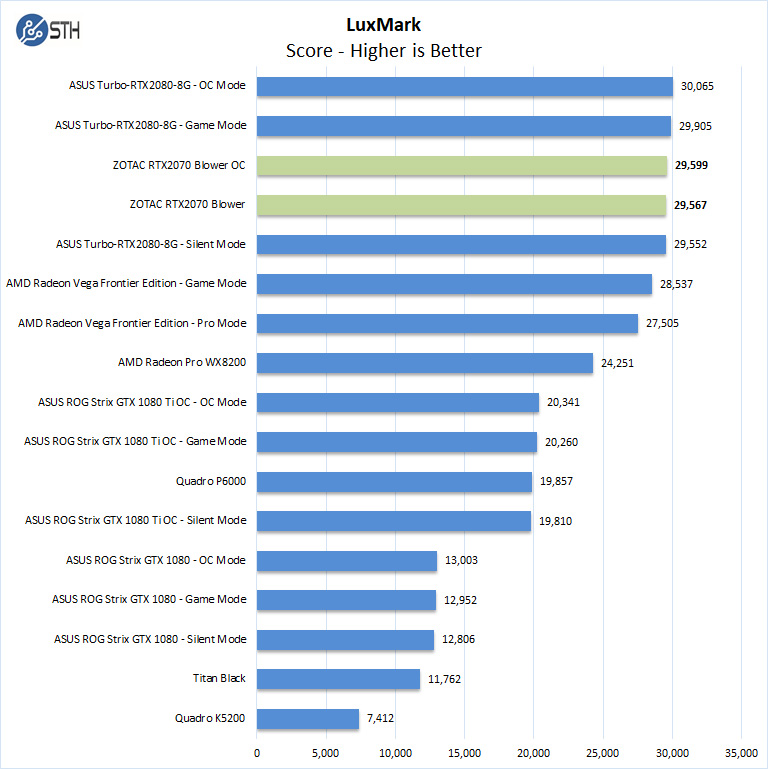
We were a bit shocked that here the GeForce RTX 2070 was so close to the blower-style RTX 2080. It shows that there is a significant impact for cooling in this type of form factor and that will depend on which part of the card is stressed. Even with half the memory, the newer GPU architecture is faster here than the AMD Radeon Vega Frontier Edition.
AIDA64 GPGPU
These benchmarks are designed to measure GPGPU computing performance via different OpenCL workloads. The first two focus on classic floating point operations per second:
- Single-Precision FLOPS: Measures the classic MAD (Multiply-Addition) performance of the GPU, otherwise known as FLOPS (Floating-Point Operations Per Second), with single-precision (32-bit, “float”) floating-point data.
- Double-Precision FLOPS: Measures the classic MAD (Multiply-Addition) performance of the GPU, otherwise known as FLOPS (Floating-Point Operations Per Second), with double-precision (64-bit, “double”) floating-point data.
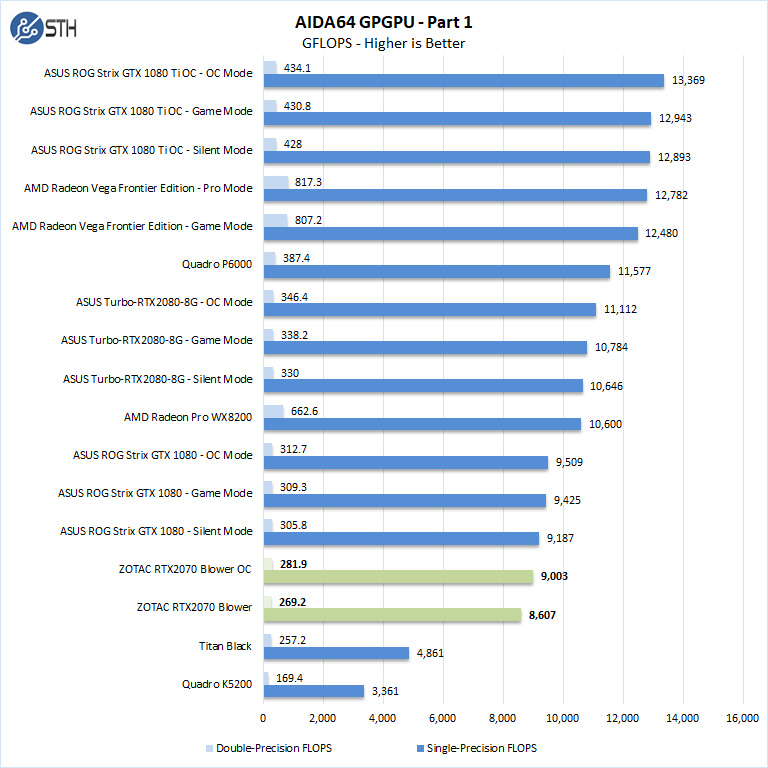
Here you can see that in raw double precision FLOPS, the AMD cards tend to perform exceptionally well. On the single precision side, the AMD Radeon Pro WX 8200 performs very well. This is one test where the ZOTAC Gaming GeForce RTX 2070 Blower is noticeably behind the GeForce GTX 1080.
The next set of benchmarks from AIDA64 measure integer operation speed:
- 24-bit Integer IOPS: Measures the classic MAD (Multiply-Addition) performance of the GPU, otherwise known as IOPS (Integer Operations Per Second), with 24-bit integer (“int24”) data. This particular data type defined in OpenCL on the basis that many GPUs are capable of executing int24 operations via their floating-point units.
- 32-bit Integer IOPS: Measures the classic MAD (Multiply-Addition) performance of the GPU, otherwise known as IOPS (Integer Operations Per Second), with 32-bit integer (“int”) data.
- 64-bit Integer IOPS: Measures the classic MAD (Multiply-Addition) performance of the GPU, otherwise known as IOPS (Integer Operations Per Second), with 64-bit integer (“long”) data. Most GPUs do not have dedicated execution resources for 64-bit integer operations, so instead, they emulate the 64-bit integer operations via existing 32-bit integer execution units.
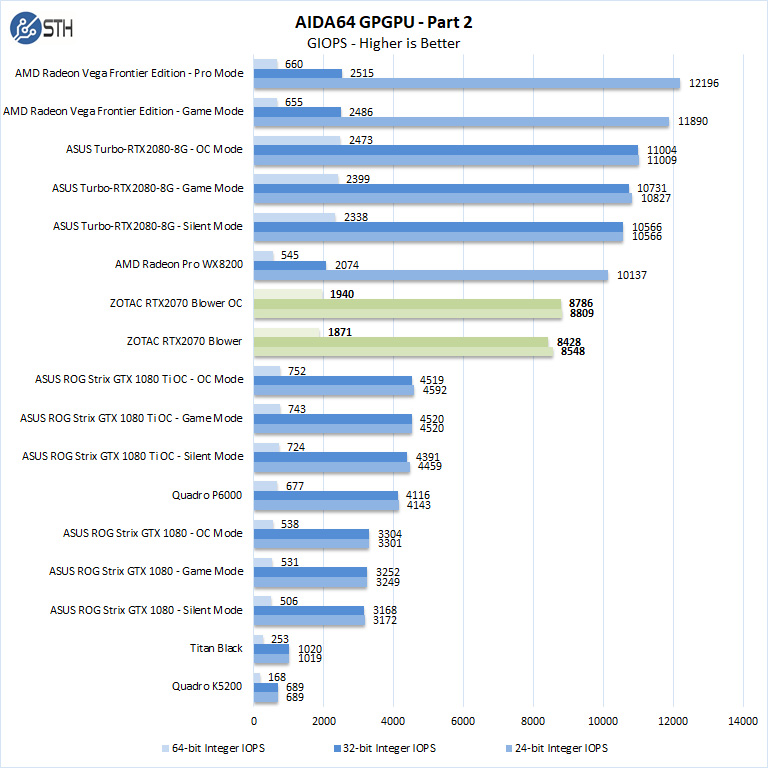
Here the new Turing architecture shows a generational improvement. The ZOTAC Gaming GeForce RTX 2070 Blower outpaces the NVIDIA GeForce GTX 1080 Ti which was the go-to compute card previously.
SPECviewperf 13
SPECviewperf 13 measures the 3D graphics performance of systems running under the OpenGL and Direct X application programming interfaces.
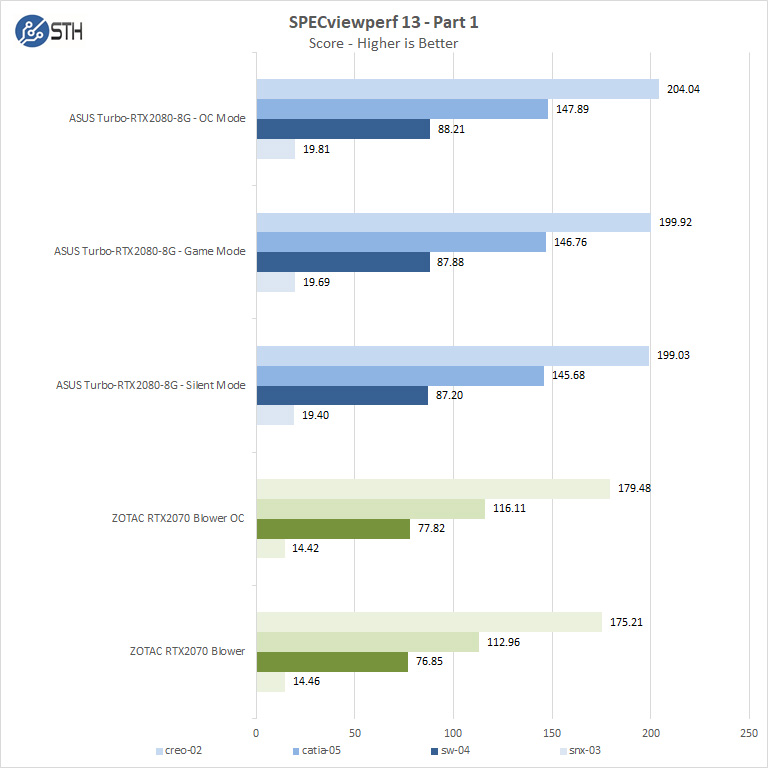
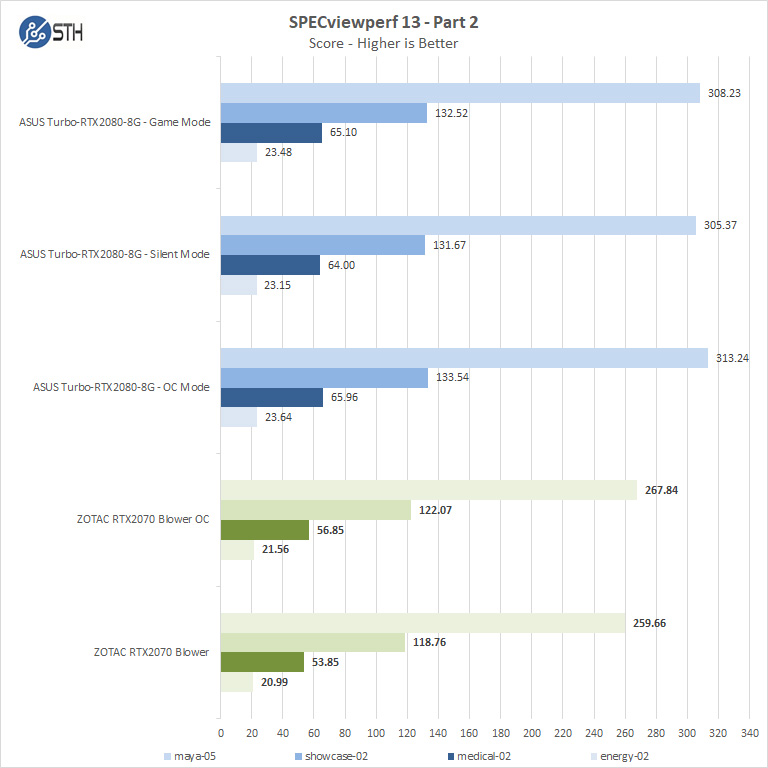
As we are building this data set, you can see the ZOTAC Gaming GeForce RTX 2070 Blower is a speed step down from the GeForce RTX 2080.
We had previously used the SPECviewperf 12 benchmark which we stopped using with the ASUS Turbo-RTX2080-8G Blower-Style GeForce RTX 2080 Performance Review. We are going to continue building upon the newer benchmark application.
Next, we are going to continue with our performance benchmarks before we move onto the power and thermal testing.




Great job, this article. Deep learning benchmarks would make it even better! Especially for this card, as many claim its has the best value for DL: http://timdettmers.com/2018/11/05/which-gpu-for-deep-learning/.